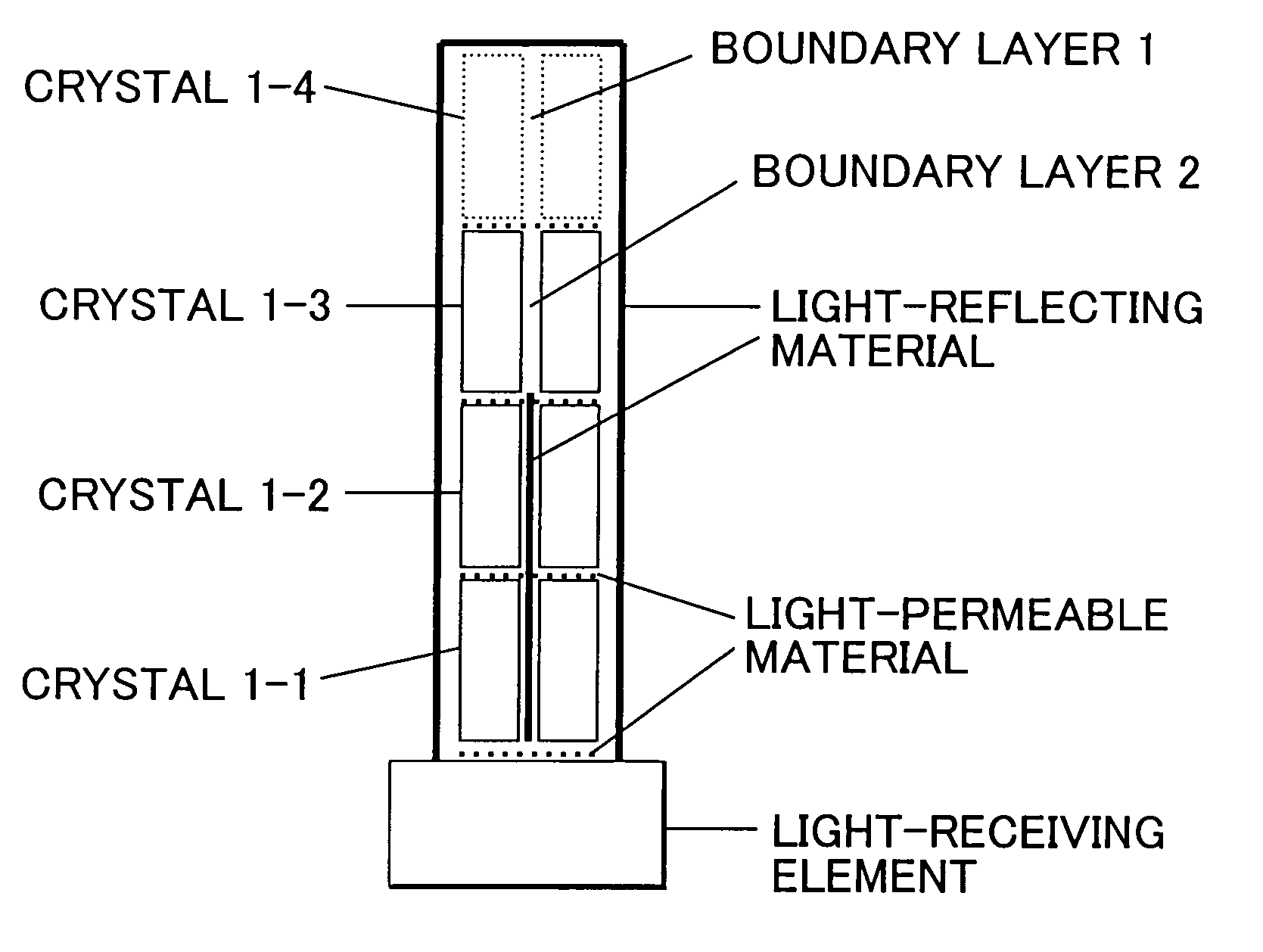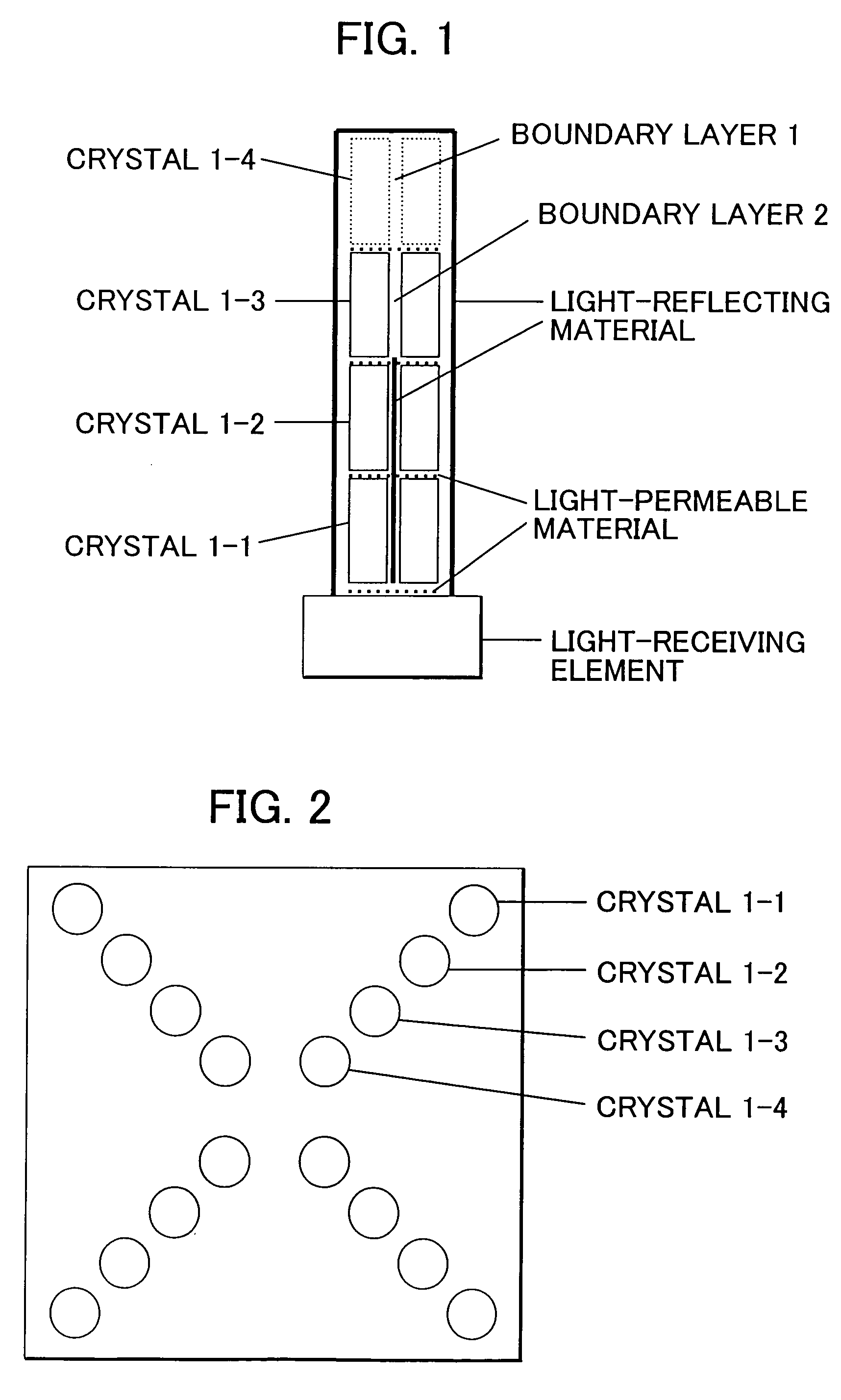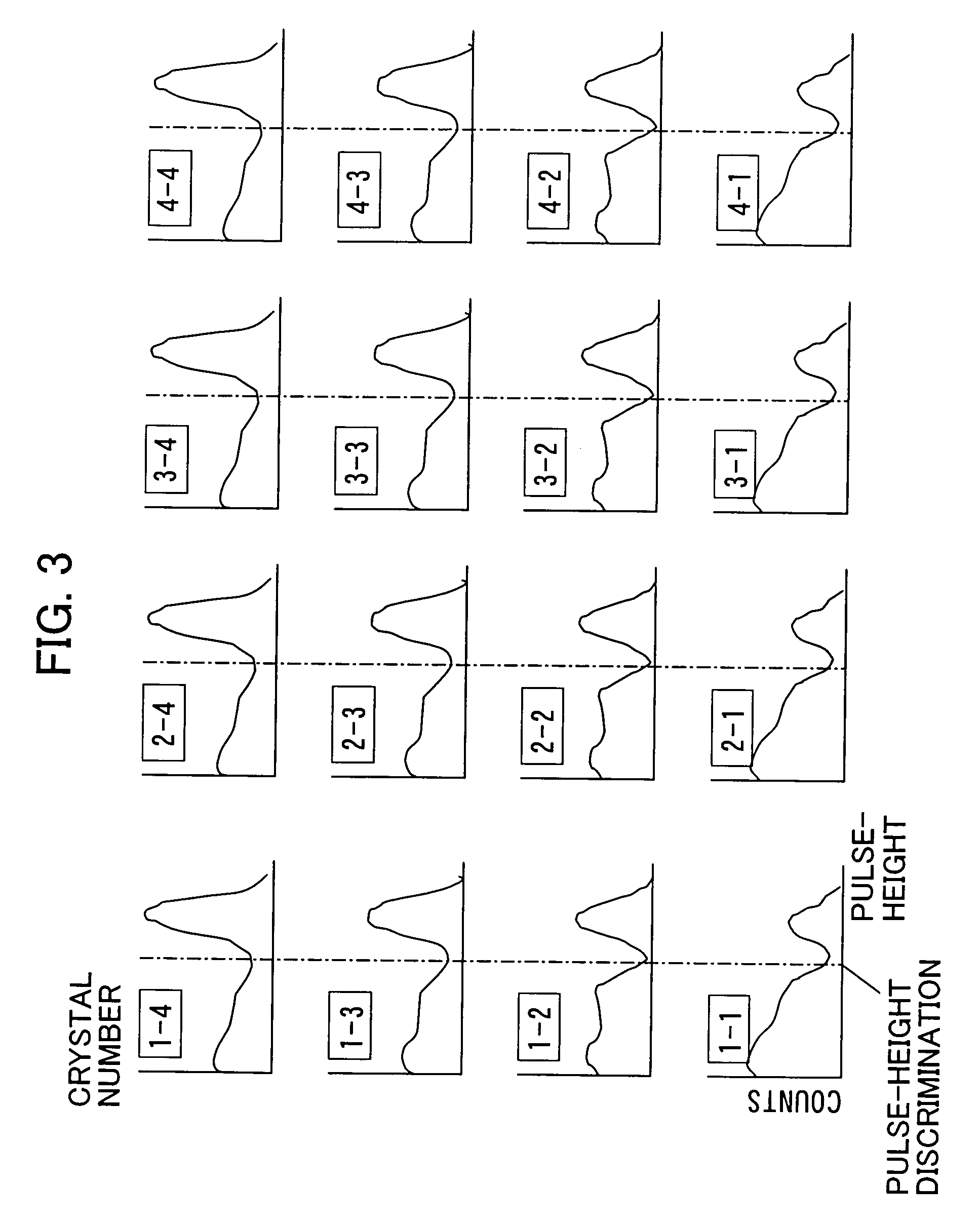Depth of interaction detector with uniform pulse-height
a detector and pulse-height technology, applied in the direction of radiation intensity measurement, instruments, x/gamma/cosmic radiation measurement, etc., can solve the problems of non-uniform image, damage to overall depth of interaction detection characteristics and energy-resolving characteristics of the device, and achieve the effect of improving the uniformity of energy information
- Summary
- Abstract
- Description
- Claims
- Application Information
AI Technical Summary
Benefits of technology
Problems solved by technology
Method used
Image
Examples
example
[0045]The present invention will hereunder be described in more detail with reference to the accompanying drawings.
[0046]FIG. 1 is a diagram for the illustration of an embodiment of the depth of interaction detector with uniform pulse-height according to the present invention. In the depth of interaction detector with uniform pulse-height according to the present invention, scintillator cells are optically put on top of each other to form a four-layer scintillator and to thus form a scintillator unit as shown in FIG. 1. In this connection, a light-receiving element is optically coupled to each multi-layer scintillator at each end face of this scintillator unit and the external portions of the scintillator unit other than the end face are coated with a light-reflecting material (such as polytetrafluoroethylene) to a thickness (as determined after drying) of, for instance, 100 μm. Thus, the light rays generated within each scintillator cell are distributed to and arrive at these four ...
PUM
| Property | Measurement | Unit |
|---|---|---|
| attenuation-time coefficient | aaaaa | aaaaa |
| attenuation-time coefficients | aaaaa | aaaaa |
| attenuation-time coefficient | aaaaa | aaaaa |
Abstract
Description
Claims
Application Information
 Login to View More
Login to View More - R&D
- Intellectual Property
- Life Sciences
- Materials
- Tech Scout
- Unparalleled Data Quality
- Higher Quality Content
- 60% Fewer Hallucinations
Browse by: Latest US Patents, China's latest patents, Technical Efficacy Thesaurus, Application Domain, Technology Topic, Popular Technical Reports.
© 2025 PatSnap. All rights reserved.Legal|Privacy policy|Modern Slavery Act Transparency Statement|Sitemap|About US| Contact US: help@patsnap.com



